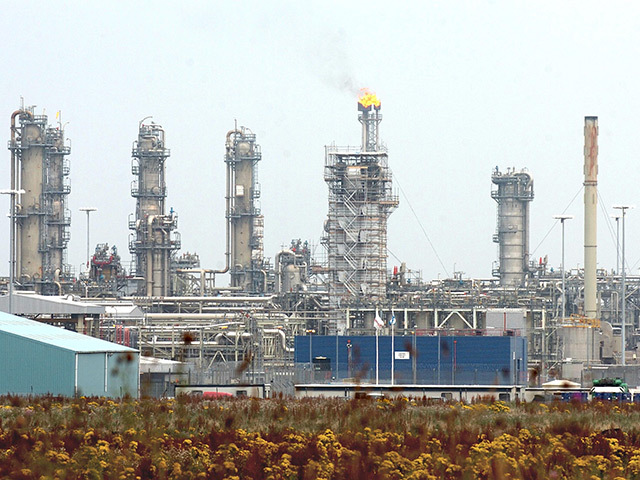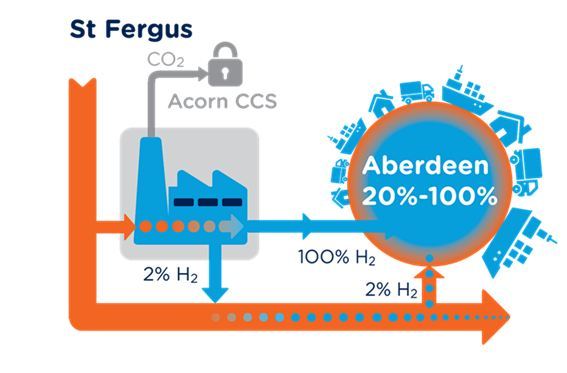
The north-east is to be used as a testing ground in a pioneering project to prove if hydrogen could be deployed at scale to eliminate emissions from the UK’s energy system.
SGN and Pale Blue Dot, the firm behind a clean energy system at the St Fergus gas terminal, have launched an “Aberdeen vision” to deliver up to 100% hydrogen through the city’s regional gas system to power homes, via the plant near Peterhead.
The study will also assess whether an unprecedented move could be carried out to blend at least two percent hydrogen with gas through the older national network serving the wider UK.
Additionally, it will identify whether a hydrogen pipeline could be built to serve Aberdeen’s transport hubs.
SGN, which manages the natural gas network for millions of homes in Scotland and the south of England, said it will help inform future UK Government decisions to reduce carbon emissions by 2050.
The work has officially started and will take place over the course over the next six to eight months.
Blending hydrogen with gas would help de-carbonise the gas network, with further potential to reduce emissions in transport and industries that use natural gas.
SGN said it will stimulate the hydrogen economy in the UK, with the north-east of Scotland considered one of the best places to invest due to 35% of the country’s gas coming ashore at the St Fergus terminal.
It would see hydrogen processed at scale from North Sea natural gas through Pale Blue Dot’s Acorn carbon capture and storage (CCS) project, which the firm is hoping to expand in coming years.
Angus McIntosh, director of energy futures at SGN, said: “What this allows you to do is stimulate the hydrogen economy as an energy vector which is the key challenge for the sector.
“This is one of the most attractive locations to do that.
“This opportunity is to blend hydrogen into the Aberdeen network, extend a pipeline for down into Aberdeen to support transport hubs and section-off parts of the Aberdeen network, perhaps for 100% hydrogen for new developments in that area.”
The work will also link St Fergus to an upcoming SGN scheme to fully power 300 homes with hydrogen, with Aberdeen one of the candidates for the work.
SGN said that while that work will provide a great deal of information, it is “small scale” in comparison to the challenge of wider hydrogen distribution.
The study will result in a series of recommendations to the UK government and help identify the best places in the UK to invest in hydrogen processing.
Sam Gomersall, commercial director at Pale Blue Dot, said: “The north-east of Scotland is the ideal location for getting started with this technology and the process of making hydrogen in bulk and putting it into the gas grid.
“We’ve been exploring opportunities for working together for the last 12 months or maybe longer, looking for areas where the strategic direction of SGN overlaps with the strategic direction of the Acorn project and other areas we’ve been working on.
“It gives you the opportunity to start in the early 2020s by decarbonising gas.
“Other projects being discussed can learn from the technical and commercial experience for getting started in order that in the future, potential exists for replacing natural gas with hydrogen.
“Our approach is a phased one which would increase the percentage of hydrogen in the grid over time in line with regulations that might allow us to do that.”
The St Fergus site’s ability to process large volumes of hydrogen may depend on it receiving funding for a larger carbon capture and storage facility.
The UK Government has highlighted the site as a key area to roll out the technology and is expected to unveil its plans later this year.
Pale Blue Dot has previously said CCS and hydrogen represent “massive” future employment opportunities for the north-east.

